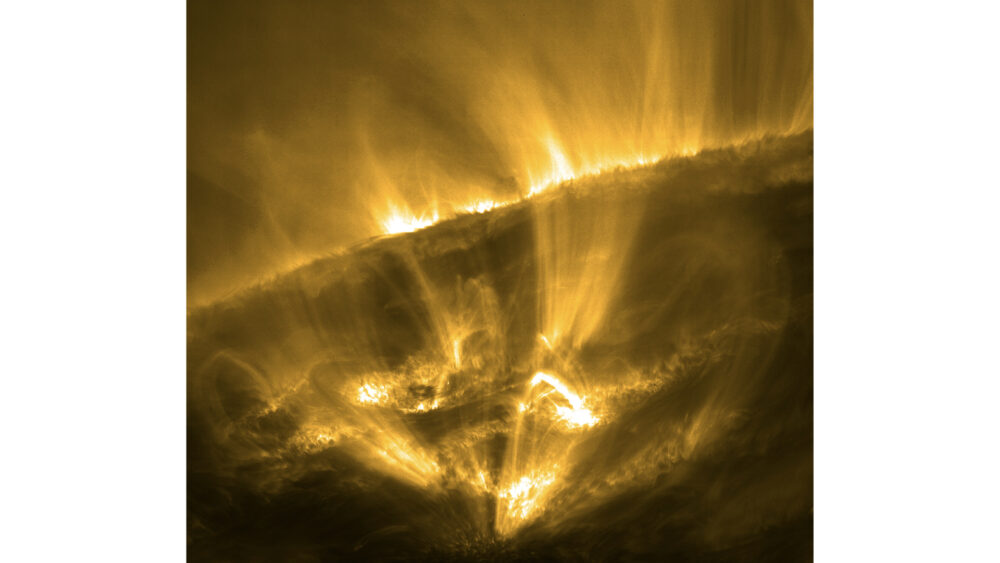
UK News
Astronomers discover ‘shooting stars’ on the Sun
2 years ago

Observations from the European Space Agency’s Solar Orbiter unveiled never-before-seen falling star-type events.
Astronomers have discovered a phenomena similar to shooting stars on the Sun, a new study reveals.
Observations from the European Space Agency’s Solar Orbiter (SolO) unveiled never-before-seen falling star-type events, or meteor-like fireballs, occurring within the plasma displays known as coronal rain.
The findings will be presented this week at the National Astronomy Meeting (NAM 2023) by lead author Patrick Antolin, assistant professor at Northumbria University.
While it does not include real water, coronal rain is a condensation process in which some of the sun’s fiery material clumps together due to sudden, localised temperature drops.
The Sun’s corona – the outermost part of its atmosphere – is formed of gas at million-degree temperatures.
Rapid drops in temperature produce super-dense clumps of plasma up to 250 kilometres wide, and gravity pulls these balls back towards the sun at more than 100 kilometres per second.
The project’s lead author, Dr Antolin, said: “The inner solar corona is so hot we may never be able to probe it in situ with a spacecraft.
“However, SolO orbits close enough to the sun that it can detect small-scale phenomena occurring within the corona, such as the effect of the rain on the corona, allowing us a precious indirect probe of the coronal environment that is crucial to understanding its composition and thermodynamics.
“Just detecting coronal rain is a huge step forward for solar physics because it gives us important clues about the major solar mysteries, such as how it is heated to millions of degrees.”
He joked: “If humans were alien beings capable of living on the sun’s surface, we would constantly be rewarded with amazing views of shooting stars, but we would need to watch out for our heads.”
Along with the first super-high-resolution images of the coronal rain clumps, SolO observed the heating and compression of gas immediately underneath them.
Experts suggest the resulting spike in intensity below the clumps indicates the gas is heated up to a million degrees, which lasts for a few minutes as they fall.
On Earth, shooting stars occur when meteoroids, or objects in space that range in size from dust grains to small asteroids, enter our atmosphere at high speeds and burn up.
The majority do not make it to the ground, and the few that do so without disintegrating can produce huge craters.
However, the Sun’s corona is thin and low in density and does not strip much material off the clumps, so scientists think most of the ‘shooting stars’ make it to the solar surface intact.
Until now, their impacts have not been observed, the observations revealed this process can produce a brief, strong brightening with an upward surge of material and shock waves that reheat the gas above.
Shooting stars and meteors in Earth’s atmosphere are characterised by a trace behind the meteor’s path.
The same happens to comets orbiting the sun, but does not occur in the solar corona because of its magnetic field.
The research will be published in a special issue of Astronomy & Astrophysics.









 Subscribe
Subscribe Follow Us
Follow Us Follow Us
Follow Us Follow Us
Follow Us Follow Us
Follow Us Follow Us
Follow Us











